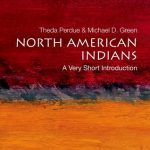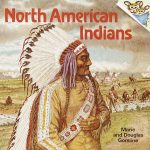 When I saw Faces from the Past on the Netgalley catelogy, I was excited, since my recent read about forensic anthropology was such a delightful read for me. My son and I have been studying early American history as well, so it fits in well with my current interests. Once again, I have to say how much I love homeschooling: as I teach my son kindergarten-level history, I am enjoying delving much deeper in to the history of my country.
When I saw Faces from the Past on the Netgalley catelogy, I was excited, since my recent read about forensic anthropology was such a delightful read for me. My son and I have been studying early American history as well, so it fits in well with my current interests. Once again, I have to say how much I love homeschooling: as I teach my son kindergarten-level history, I am enjoying delving much deeper in to the history of my country.
Faces from the Past: Forgotten People of North America by James M. Deen (Houghton Mifflin Harcourt, November 2012) is another middle grade or young adult nonfiction look at American history by forensic analyzation of the bones that remain behind after hundreds of years. Mr Deen goes much farther back than Sally Walker did: he begins with remains found that are probably 15,000 years old, some of the oldest American bones found. I loved how his book provided examples of remains from all over the country, from a shipwrecked French sailor from La Salle’s expedition found off the coast of what is now Texas (1600s) to the “ordinary” women buried in Albany, New York.
What I especially enjoyed about Deen’s book was that he focused on the science and art required to create a face based on the bones to represent the person who once lived. As the scientists and artists created the faces, Deen artfully told us the story as well as it could be told about these people, as we know it from the bones.
Although I really enjoyed reading Faces from the Past, in some respects, I did not feel it was as strong a book as Sally Walker’s Written in Bone, which I read first. I readily admit this is an unfair comparison, since I read Ms. Walker’s first and I am biased since I happen to love Sally Walker’s other books as well. Faces from the Past and Written in Bone have different purposes. Ms Walker is a scientist, and her book explained the science behind forensic anthropology in an incredibly straight forward and fascinating way. Her focus was on the Jamestown era and nearby situations, and she tells us what we can learn from the bones and the manner in which they were buried. Mr Deen, on the other hand, has a background in language arts (see his website). I felt his scientific discussions were not as seamless as those were in Written in Bone. Faces from the Past was still very good, but it would be difficult to beat Ms Walker in scientific clarity. Nevertheless, Mr Deen’s book has the strength of personality and story, and I think the fact that he focused on facial reconstruction allowed him to give life to these fascinating deceased people.
I am interested in family history, so I admit that I love learning about how the lower class people lived, survived, and died in their respective eras. My ancestors were like these people. While Mr. Deen did not, of course, find the story of my American ancestors, reading about the people he calls “forgotten” helped me better appreciate my own family’s unknown histories.
For fans of Written in Bone as well as young readers interested in American history or forensic anthropology, Faces from the Past will prove to be a satisfying read.
Note: I read a digital copy via netgalley from the publisher for review consideration.




